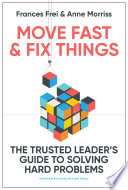

Rapid prototyping is a fundamental concept in product development that encourages teams to create quick, iterative versions of a product. This approach allows for immediate feedback and adjustments, ensuring that the final product aligns closely with user needs and expectations. The book emphasizes that by moving quickly through the prototyping phase, teams can identify flaws and opportunities for improvement much sooner. This not only saves time and resources but also fosters a culture of innovation where ideas can be tested and refined in real-time. The author provides examples from successful tech companies that have adopted this approach, illustrating how rapid prototyping can lead to breakthrough products.
Continue readingThe concept of 'fail fast, learn faster' is central to the book's philosophy. It encourages teams to view failures as learning opportunities rather than setbacks. By adopting a mindset that celebrates experimentation, organizations can accelerate their learning curves and improve their products more effectively. The author discusses various case studies where companies have embraced this principle, highlighting how quick iterations and a willingness to pivot based on feedback have led to significant advancements. This approach not only cultivates resilience but also promotes a culture where innovation can thrive without the fear of failure stifling creativity.
Continue readingCross-functional collaboration is vital to the success of any tech initiative. The book argues that breaking down silos within organizations allows for diverse perspectives and expertise to come together, leading to more comprehensive solutions. The author outlines strategies for fostering collaboration among different teams, such as product, engineering, marketing, and customer support. By encouraging open communication and shared goals, organizations can enhance their problem-solving capabilities and create products that are well-rounded and user-focused. The narrative includes anecdotes from industry leaders who have successfully implemented cross-functional teams, showcasing the tangible benefits of this collaborative approach.
Continue readingUser-centric design is a cornerstone of effective product development, as highlighted in the book. The author stresses the importance of understanding user needs and behaviors to create products that truly resonate with them. By employing techniques such as user interviews, usability testing, and empathy mapping, teams can gain valuable insights that inform their design decisions. The book provides practical frameworks for implementing user-centric design, ensuring that products are not only functional but also enjoyable to use. This focus on the user experience is presented as a competitive advantage, as companies that prioritize user needs often see higher customer satisfaction and loyalty.
Continue readingAgility in project management is another key theme in the book. The author advocates for agile methodologies that promote flexibility and adaptability in the face of changing requirements and market conditions. By adopting agile practices, teams can respond more effectively to feedback and pivot their strategies as needed. The book outlines various agile frameworks, such as Scrum and Kanban, and discusses their implementation in tech projects. The emphasis on iterative progress and continuous improvement is portrayed as essential for staying competitive in a fast-paced industry. Real-world examples illustrate how agile project management can lead to successful outcomes and improved team dynamics.
Continue readingThe book underscores the importance of data-driven decision-making in the tech landscape. The author argues that leveraging data analytics can provide valuable insights that guide product development and business strategies. By collecting and analyzing user data, companies can identify trends, measure performance, and make informed decisions that align with their goals. The narrative includes discussions on the tools and techniques available for data analysis, as well as case studies of organizations that have successfully implemented data-driven approaches. This focus on analytics is presented as a means of reducing uncertainty and enhancing the effectiveness of product initiatives.
Continue readingCreating a culture of innovation is essential for long-term success in technology. The book emphasizes that organizations must cultivate an environment where creativity is encouraged, and employees feel empowered to share their ideas. The author provides insights into leadership practices that foster innovation, such as promoting psychological safety, recognizing contributions, and supporting continuous learning. By investing in their workforce and encouraging a mindset of exploration, companies can unlock their full creative potential. The narrative is enriched with examples of organizations that have thrived by prioritizing innovation, illustrating how a strong culture can lead to sustained competitive advantage.
Continue reading